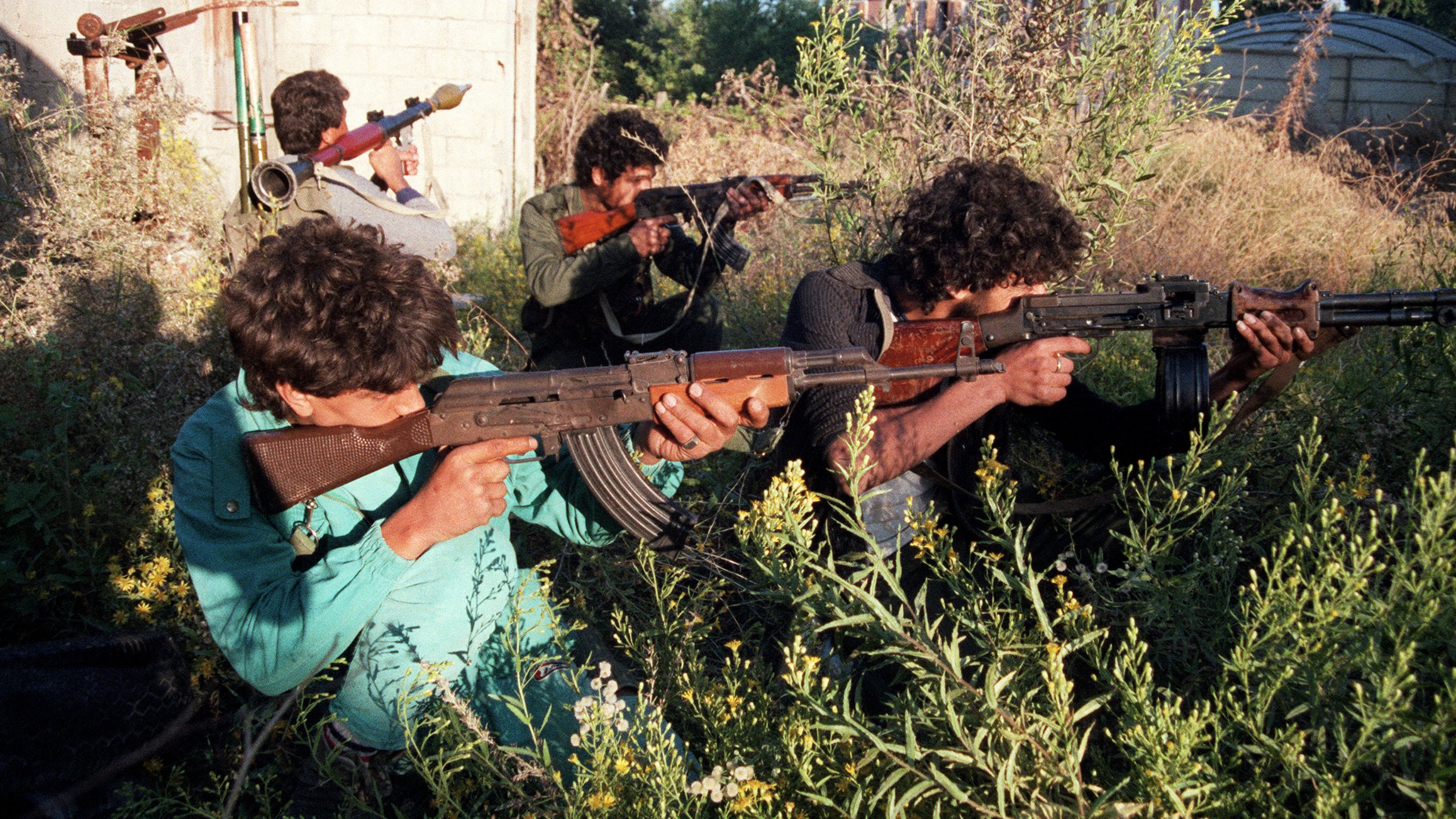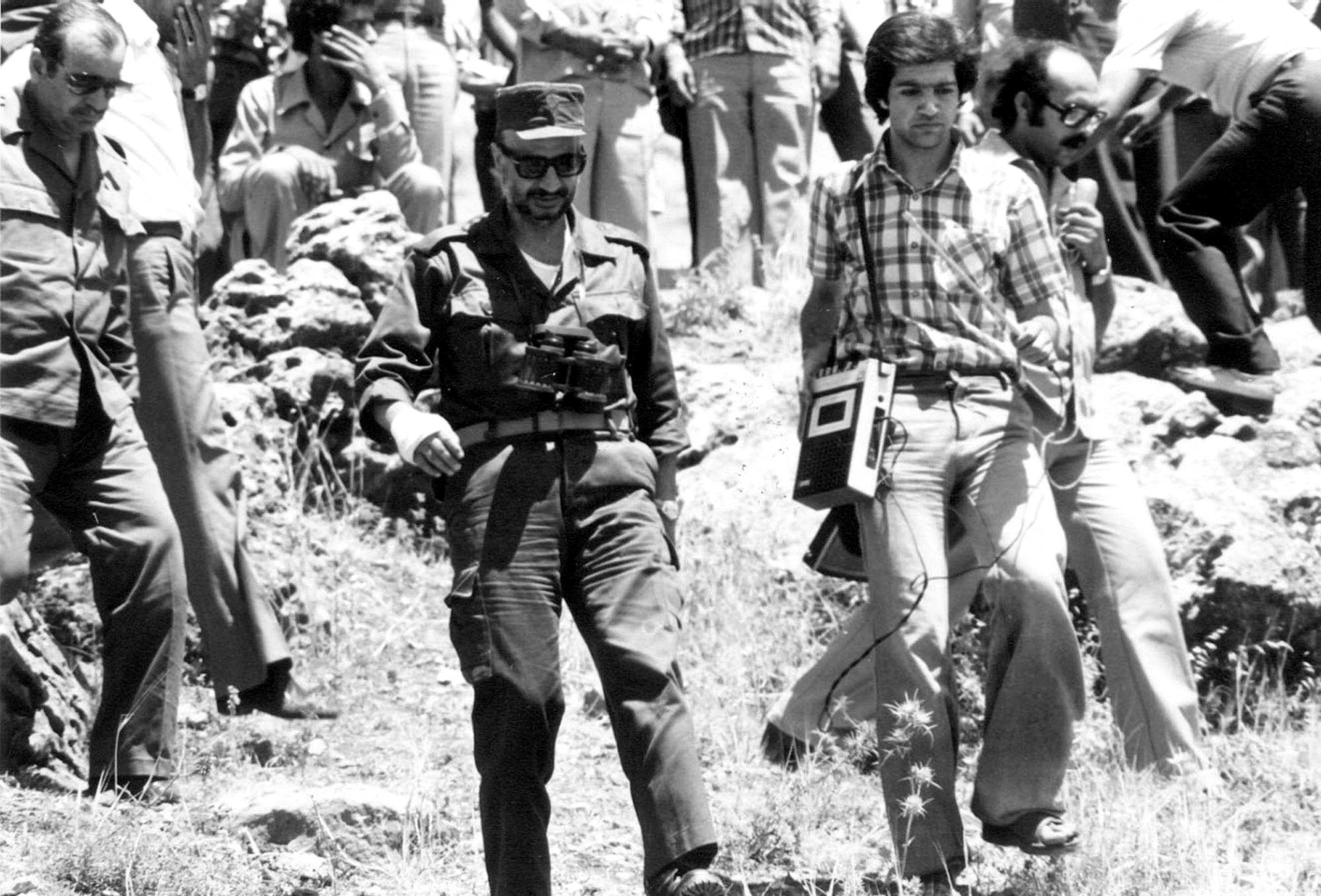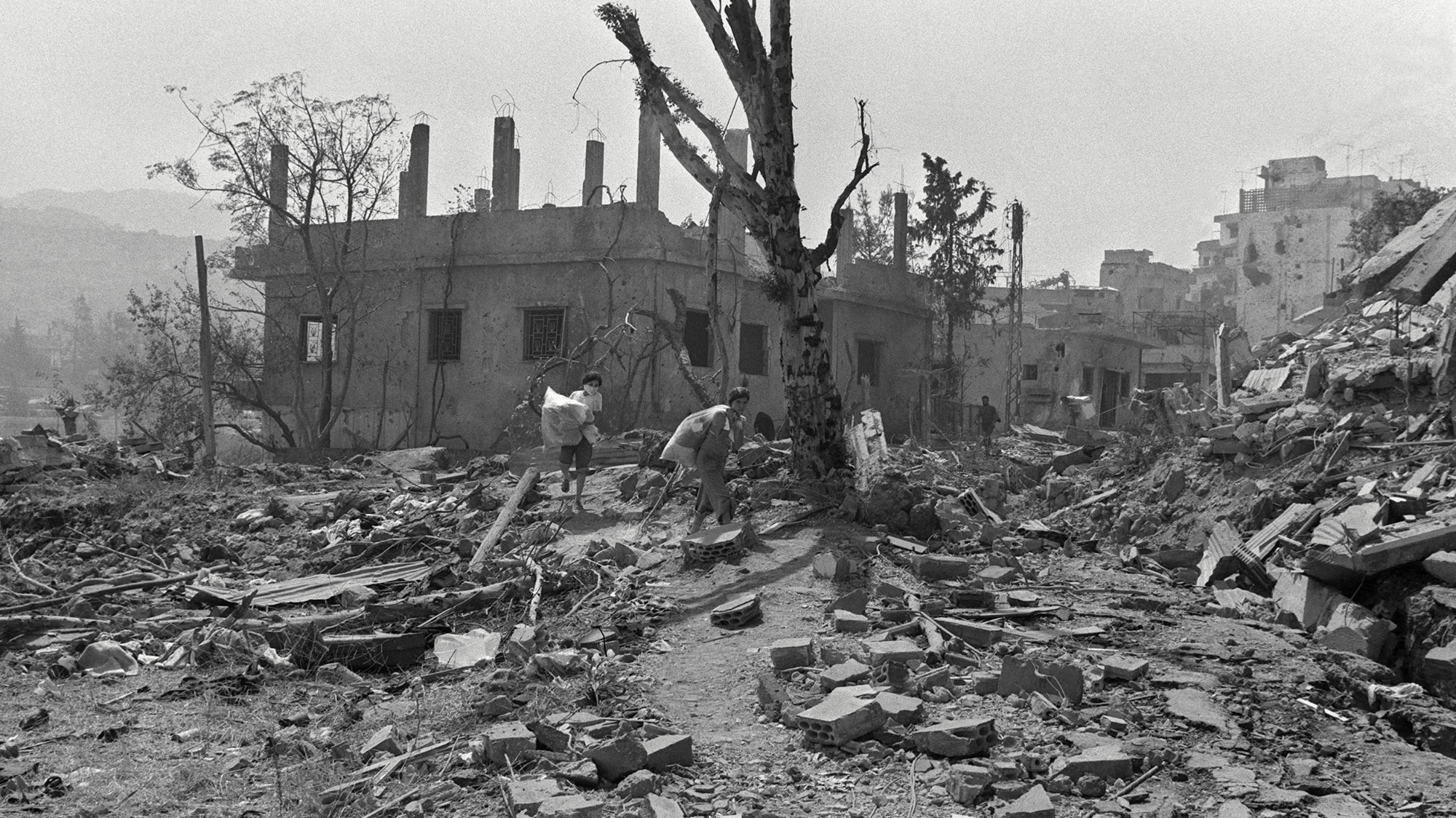The contentious history of Palestinian armed resistance in Lebanon

Earlier this month, the Hamas movement in Lebanon urged Palestinian youth in the country to join a newly created group: Vanguards of the Al-Aqsa Flood.
In its statement, Hamas highlighted the "role of the Palestinian people wherever they are located to resist the occupation through all available and legitimate means".
That 4 December statement quickly drew the ire of local leaders, with caretaker Prime Minister Najib Mikati and an array of Lebanese political parties criticising Hamas for issuing a call they considered an infringement on Lebanon's sovereignty.
Since the 7 October Hamas-led attack on southern Israel, a massive offensive on the Palestinian coastal enclave by Israel has killed at least 21,000 Palestinians, the majority women and children.
In a bid to dispel Lebanese fears over its announcement, Hamas stressed it had no intention to found a new military body, rather a "popular framework" to mobilise Palestinian youth.
Stay informed with MEE's newsletters
Sign up to get the latest alerts, insights and analysis, starting with Turkey Unpacked
Nevertheless, Hamas's creation of the new body, named after its Al-Aqsa Flood assault on Israel that resulted in the deaths of around 1,200 people, recalled the troubled history of Palestinian armed resistance in Lebanon - which remains a divisive topic.
In 1948, Lebanon took in 100,000 of the 750,000 Palestinians expelled from their homes by Zionists during the Nakba, which was caused by the creation of the state of Israel. They settled in 12 refugee camps across Lebanon, and up to the late 1960s Palestinian armed resistance by refugees in the country against Israel was very limited.
Traumatised by the destruction of their society in historic Palestine and overwhelmed with the challenges of survival, Palestinians pinned hopes on Arab countries, particularly Egypt's pan-Arab leader Gamal Abdel Nasser, for securing their return to their homeland.
Moreover, Palestinians lived under dire humanitarian conditions and strict security measures in refugee camps heavily policed by Lebanese authorities. Adhering to a truce agreement signed with Israel in March 1949, the Lebanese state was vehemently opposed to any attack carried out against Israel from Lebanon.
But this status-quo was turned upside down in the wake of the humiliating defeat of 1967, when Israel attacked a collection of Arab countries and occupied the Palestinian territories of East Jerusalem, the West Bank and the Gaza Strip, as well as Egypt's Sinai Peninsula and Syria's Golan Heights.
Birth of the PLO
Losing faith in Arab governments, Palestinians decided to take matters into their own hands. Palestinian armed organisations such as Fatah and the Popular Front for the Liberation of Palestine (PFLP) rose into prominence.
In 1969, Fatah's charismatic leader Yasser Arafat was elected the chairman of the Palestine Liberation Organisation (PLO), the umbrella group of Palestinian guerrilla factions. The PLO charter of 1968 stated that "armed struggle is the only way of liberating Palestine, and is thus strategic, not tactical".
Fatah's ranks became swollen with recruits and its popularity soared across the Arab world. In Lebanon, Palestinian refugees began weapons training and guerrilla attacks staged by PLO groups against Israel from south Lebanon became more common. Israel fiercely bombarded southern villages in an attempt to turn southerners against the PLO. Also in the south, the Lebanese army cracked down on Palestinian guerrilla fighters in a bid to limit their capacity to launch cross-border attacks.
The surge in PLO military activity from Lebanon exacerbated divisions in the country. A majority of Christians was opposed to the PLO's armed presence in Lebanon, arguing it violated the country's sovereignty.
The fact that the bulk of the Palestinian refugees were Muslim raised fears among members of the Maronite Christian political class of a possible alteration in the country's delicate sectarian balance. Lebanon's political system featured a consociational democracy in which power was allocated to specific sects. The powerful post of the president was allocated to the Maronite Christians, while the less influential offices of prime minister and speaker of parliament were occupied by a Sunni and a Shia respectively.
Harbouring more sympathy for the Palestinian cause, most Muslims of Lebanon supported the presence of PLO guerrillas in their country. For some Muslim politicians, an armed PLO was a source of strength they could rely on to pressure Maronite leaders to concede power to Muslims. In south Lebanon, many residents viewed Palestinian guerrillas as a deterrent against Israel's numerous incursions into Lebanon in violation of the truce agreement.
Armed clashes between the Lebanese army and PLO armed factions intensified in 1969, and disagreements over how to approach the issue between Lebanese parties caused a seven-month deadlock in government-forming negotiations.
The breakthrough came from Egypt, with Nasser brokering the Cairo Accords to regulate relations between the PLO and Lebanese authorities.
A major turning point in Lebanese-Palestinian relations, the Cairo Accords granted the PLO guerrillas the right to attack Israel from Lebanon, with their transportation and supply lines facilitated by the Lebanese army. PLO units were allowed to have specific posts in south Lebanon and to independently run their refugee camps away from Lebanese authorities.
By 1971, Lebanon became the sole base for PLO fighters after a major violent crackdown by Jordan, referred to as the Black September events of 1970, eradicated their presence in the kingdom.
Gradually, PLO authority stretched to areas outside refugee camps in Beirut and south Lebanon. Some areas of the south became known as "Fatah Land", while the "Fakhani Republic" emerged in west Beirut, in reference to the neighbourhood of the capital where the main PLO headquarters was located.
Civil war
With the absence of any breakthrough regarding the Palestine question, PLO raids continued. In May 1972, 25 people were killed in an attack that targeted Israel's airport near Lydd. The operation was carried out by three members of the Japanese Red Army and planned by the PFLP. Israel responded in July by assassinating PFLP intellectual Ghassan Kanafani in a car bomb in the Beirut suburb of Hazmieh, which also killed his niece.
In September, Palestinian militants took 11 members of Israel's Olympics team hostage in Munich, demanding their trade with 200 Palestinian prisoners held by Israel. The attack and an ensuing armed clash killed the Israelis, five Palestinian gunmen and a West German police officer. The operation was claimed by the shadowy Black September Organisation, but was plotted by PLO officials Salah Khalaf and Mohammad Dawoud Awdah.
Israel reacted with a ground incursion into south Lebanon the same month, killing at least nine Lebanese army soldiers and wounding 10 others. Israel also launched a spree of assassinations targeting PLO figures. In April 1973, an Israeli commando unit killed Palestinian officials Kamal Nasser, Kamal Adwan and Mohammad Youssef Najjar after storming their Beirut apartments.
These developments served only to aggravate divisions between the Lebanese over Lebanon's official stance on the Palestinian cause. The majority of Muslims and leftists accused the army of not fully assuming its responsibilities in defending Lebanon against increasing Israeli attacks, while Christian factions rallied behind the military establishment. In what seemed to be a replay of the Black September events, the army launched an unsuccessful attempt to crush the PLO armed groups in May 1973.
The divisions between the Lebanese over the PLO's role in their country and the distribution of political power among sects finally evolved into an all-out civil war on 13 April 1975. Palestinian armed factions played an active role in the first phase of the conflict, better known as the "two-year" war. PLO groups allied themselves with leftist and Muslim militias who fought against the Lebanese Front, a coalition of right-wing Christian armed factions backed by Israel.
Throughout 1976, Lebanese Front militias besieged Palestinian refugee camps in predominantly Christian areas east of Beirut and engaged with fierce battles with PLO fighters. The camps were eventually destroyed by the Christian militiamen, who massacred many unarmed refugees and expelled the rest to predominantly Muslim West Beirut. A massacre in the camp of Tal al-Zaatar, the largest of these camps, killed between 1,500 and 2,000 people. Others suggest the number of the victims who fell since the start of the camp's siege exceeded 4,000.
The same year, fighters from the pro-Syrian al-Saeqa Palestinian faction joined Lebanese leftist groups in a major attack on Lebanese Front positions in the Christian town of Damour, south of Beirut. The town was depopulated and between 80-250 of its inhabitants massacred.
The first phase of the civil war was over in autumn 1976, when Syrian troops were deployed in Lebanon under an Arab League plan to end the conflict.
Lebanon invasion
Meanwhile, more PLO raids from Lebanon against Israel took place, particularly as the plight of Palestinians was sidelined during peace talks between Israel and Egypt, which kicked off following President Anwar Sadat's November 1977 visit to Jerusalem. Three years earlier, the PLO hinted it was ready to accept a two-state solution in its 10-point programme of June 1974.
In March 1978, a PLO commando unit from Lebanon landed by boat south of Haifa in northern Israel, seized a bus and clashed with policemen, killing more than 30 people. Israel invaded south Lebanon in a bid to drive PLO fighters north of the Litani river. The fighting killed 1,000 Lebanese and Palestinians - the bulk of whom were civilians - and 18 Israeli soldiers. Israel withdrew its troops from most of the south in June following the issuance of UN Security Council Resolution 425 and the deployment of UN peacekeepers in the area.
Nevertheless, another major confrontation between the PLO and Israel broke out in July 1981. The two weeks of fighting saw Israeli aircraft levelling a Fakhani residential building, killing 300 people. Six Israelis were killed and nearly 100 wounded in PLO shelling of northern Israel. The fighting came to an end under a ceasefire deal brokered by US envoy Philip Habib.
In June 1982, Israel broke the ceasefire and began a massive invasion of Lebanon under the pretext of a failed assassination attempt on Israel's ambassador to London, Shlomo Argov. The attack was claimed by a splinter PLO group led by Sabri al-Banna, aka Abu Nidal.
The Israeli invasion killed 19,000 Lebanese and Palestinians - mainly civilians - and over 370 Israelis, most of whom were serving with the military. The invasion forced the PLO to move out of its Beirut headquarters under a new deal mediated by Habib. With around 12,000 fighters relocating to numerous Arab countries, the invasion marked the end of the significant and active PLO presence in Lebanon.
Departure
Barely two weeks after the PLO's departure, the Lebanese Forces, a Christian militia, massacred between 1,000 and 3,000 Palestinian refugees and Lebanese in the Palestinian refugee camps of Sabra and Shatila in southern Beirut. The atrocities were carried out contrary to assurances Habib made to Palestinian leaders regarding the safety of refugees after their fighters evacuate Beirut.
With Israel finalising a partial withdrawal from south Lebanon by spring 1985 in the wake of mounting armed attacks by various Lebanese factions, PLO fighters moved back to refugee camps in the area. They regrouped and began preparing to resume armed activities against Israeli occupation troops remaining in south Lebanon.
But the returnees clashed with the Amal movement, which represented Lebanon's Shia community and was popular in south Lebanon. Although it conducted its own military operations against the Israeli army in the south, Amal was adamant not to allow a resumption of PLO raids from the newly liberated territory.
For many residents of the south, the PLO's armed activities staged from their towns and villages were ineffective and only invited destructive Israeli retaliatory attacks. Others were tired of the PLO's oppressive practices towards southerners prior to 1982. Amal besieged Palestinian refugee camps in south Lebanon and Beirut, in what became known as the "war of camps", which unfolded in numerous rounds between 1985 and late 1987.
A series of developments in the following years contributed to the dying down of Palestinian armed activity in Lebanon. The Cairo Accords were abolished by Lebanon's parliament in May 1987. In October 1989, Lebanese MPs finally signed a Saudi-Syrian-brokered deal to end the country's civil war. In an effort to regain its authority across the country, the Lebanese army deployed in large areas of south Lebanon in July 1991, forcing PLO fighters to move back to refugee camps.
Three months later, the United States brokered the Madrid peace conference to end the Arab-Israeli conflict, and in September 1993 the PLO signed the Oslo Accords with Israel, abandoning armed struggle.
Despite the annulment of the Cairo Accords, most Palestinian refugee camps in Lebanon are currently still run by the PLO. A reinstallation of government authority inside camps is left for Lebanese-Palestinian dialogue to sort out.
This article is available in French on Middle East Eye French edition.
Middle East Eye delivers independent and unrivalled coverage and analysis of the Middle East, North Africa and beyond. To learn more about republishing this content and the associated fees, please fill out this form. More about MEE can be found here.







